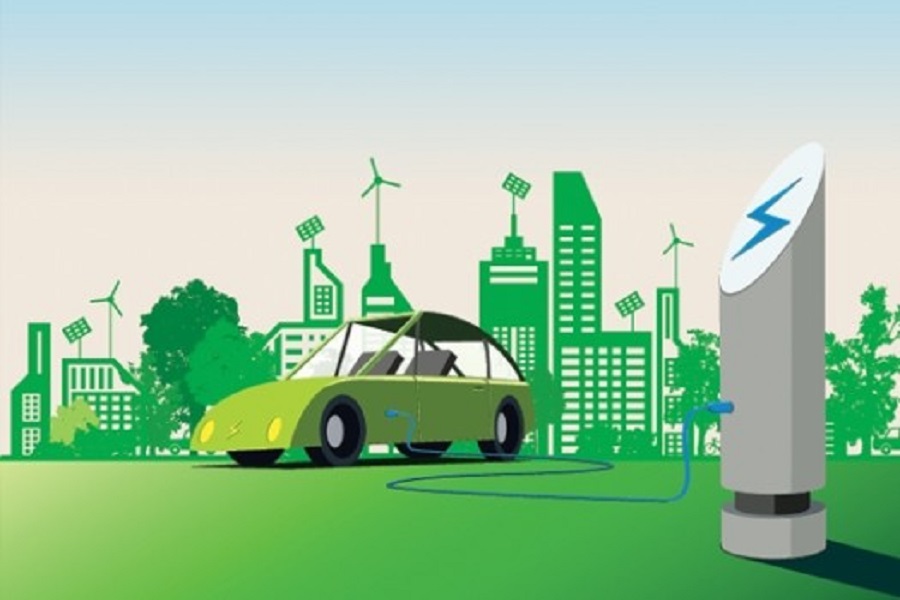
Electric cars are rapidly becoming the cornerstone of a sustainable future. As global awareness of climate change rises and the push for greener technologies intensifies, electric vehicles (EVs) present a compelling solution. They offer significant environmental benefits, cost savings, and a quiet, smooth driving experience. This article explores the eco-friendly nature of electric cars and discusses how advancements in EV charging solutions are set to make EV ownership even more convenient and efficient in the future.
The Environmental Benefits of Electric Cars
One of the most significant advantages of electric cars is their reduced environmental impact. Traditional internal combustion engine (ICE) vehicles emit a range of pollutants, including carbon dioxide (CO2), nitrogen oxides (NOx), and particulate matter, which contribute to air pollution and global warming. In contrast, electric cars produce zero tailpipe emissions, making them a cleaner alternative for our cities and environment.
Reduced Greenhouse Gas Emissions
The transportation sector is a significant contributor to greenhouse gas emissions, which are the primary driver of climate change. By switching to electric cars, we can significantly reduce these emissions. While it’s true that the production of electricity for EVs can also generate emissions, the overall carbon footprint of an electric car is still much lower than that of a gasoline-powered vehicle, especially when the electricity comes from renewable sources like solar, wind, or hydroelectric power.
Improved Air Quality
Electric cars also contribute to improved air quality, particularly in urban areas where vehicle emissions are a significant source of air pollution. The absence of tailpipe emissions means that electric cars do not produce harmful pollutants such as NOx and particulate matter, which can cause respiratory problems and other health issues. By reducing the number of ICE vehicles on the road, we can make our cities cleaner and healthier places to live.
Economic Advantages of Electric Cars
While the initial purchase price of an electric car can be higher than that of a conventional vehicle, the long-term savings are substantial. Electric cars have fewer moving parts, meaning they require less maintenance. There are no oil changes, fewer parts to wear out, and regenerative braking reduces the wear on brake systems. Additionally, electricity is generally cheaper than gasoline, resulting in lower fueling costs. Over time, these savings can offset the initial purchase price, making electric cars a cost-effective choice.
The Evolution of Charging Technology
One of the main concerns for potential electric car owners is the time it takes to charge their vehicles. However, charging technology has advanced significantly in recent years, and these advancements are set to continue, making EV ownership even more convenient.
Types of Charging
There are several methods and locations for charging electric cars, each with its own advantages and considerations. Understanding these options is crucial for optimizing your EV experience.
Home Charging
Home charging is the most convenient and cost-effective method for most electric vehicle owners. There are two main types of home charging:
-
Level 1 Charging: This method uses a standard 120-volt household outlet and requires no particular installation. Level 1 charging is the slowest option, typically adding 3-5 miles of range per hour. It is suitable for overnight charging and for drivers with short daily commutes.
-
Level 2 Charging: Level 2 charging uses a 240-volt outlet, similar to those used for large appliances like dryers. This method requires the installation of a specialized charging station. Level 2 charging is much faster than Level 1, adding 20-30 miles of range per hour. It is ideal for overnight charging and for drivers who need to recharge their vehicles more quickly.
Public Charging Stations
Public charging stations provide a convenient option for charging on the go. These stations are located in various places, including shopping centers, parking garages, and along highways. There are three main types of public charging:
-
Level 2 Charging: Similar to home Level 2 charging, these stations use 240-volt outlets and provide a moderate charging speed. They are suitable for longer stops, such as shopping or dining.
-
DC Fast Charging: Also known as Level 3 charging, DC fast charging uses direct current (DC) to provide a rapid charge. These stations can add 60-80 miles of range in just 20 minutes, making them ideal for long road trips. However, not all electric cars are compatible with DC fast charging, so it’s essential to check your vehicle’s specifications.
-
Tesla Superchargers: Exclusive to Tesla vehicles, Superchargers are a network of high-speed charging stations that provide even faster charging than standard DC fast chargers. They can add up to 200 miles of range in just 15 minutes. Tesla owners can use the company’s app to locate and navigate to the nearest Supercharger.
Future Advancements in Charging Technology
As electric vehicles become more prevalent, the charging infrastructure will continue to evolve. Innovations such as ultra-fast charging stations, wireless charging, and vehicle-to-grid (V2G) technology are on the horizon, promising to make EV ownership even more convenient and sustainable.
Ultra-Fast Charging
Ultra-fast charging stations, capable of delivering up to 350 kW of power, are being developed to reduce charging times significantly. These stations could add hundreds of miles of range in just a few minutes, making electric vehicles even more practical for long-distance travel. Companies like Ionity and Electrify America are already rolling out ultra-fast chargers across Europe and the United States, respectively.
Wireless Charging
Wireless charging, also known as inductive charging, allows electric vehicles to charge without being plugged in. Instead, a charging pad on the ground transfers energy to a receiver on the car. This technology is still in development but holds great potential for simplifying the charging process. Imagine simply parking your car over a wireless charging pad and walking away, knowing your vehicle will be fully charged when you return.
Vehicle-to-Grid (V2G) Technology
V2G technology allows electric vehicles to not only draw power from the grid but also supply it back. This can help balance the grid during peak demand times and provide backup power to homes during outages. While still in its early stages, V2G has the potential to transform the relationship between electric vehicles and the power grid. By enabling EVs to act as mobile energy storage units, we can create a more resilient and efficient energy system.
Best Practices for Charging Electric Cars
To ensure the longevity and optimal performance of your electric vehicle’s battery. It is essential to follow the best practices for charging:
-
Avoid Frequent Fast Charging: While DC fast charging is convenient, frequent use can degrade your battery over time. Use Level 2 charging for regular use and reserve fast charging for long trips.
-
Don’t Overcharge: Charging your battery to 100% regularly can reduce its lifespan. Aim to keep your battery level between 20% and 80% for daily use.
-
Monitor Charging Habits: Use your vehicle’s app or onboard system to track your charging habits and battery health. This can help you identify any issues and adjust your routine accordingly.
-
Plan Long Trips: Before embarking on a long journey, plan your route and identify charging stations along the way. Apps like PlugShare and A Better Routeplanner can help you find compatible chargers and estimate charging times.
Conclusion
Electric cars are undoubtedly a vital component of an eco-friendly future. They offer numerous environmental and economic benefits, making them an attractive alternative to traditional gasoline-powered vehicles. While the current charging infrastructure may seem daunting to some, advancements in technology are rapidly improving the convenience and efficiency of EV charging. As ultra-fast charging, wireless charging https://futurecharging.com.au/, and vehicle-to-grid technology become more widespread, the process of charging electric cars will only become faster and more seamless.
By understanding the different types of electric vehicles and the various charging options available, potential EV owners can make informed decisions that suit their needs. Adopting best practices for charging will ensure the longevity and efficiency of your electric vehicle’s battery, allowing you to enjoy the many benefits of EV ownership for years to come. The future of transportation is electric, and with continued innovation and investment in charging infrastructure, it’s a future that’s becoming increasingly accessible to all.



